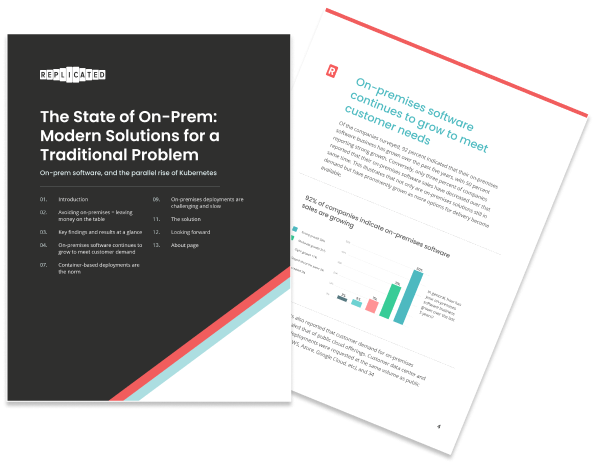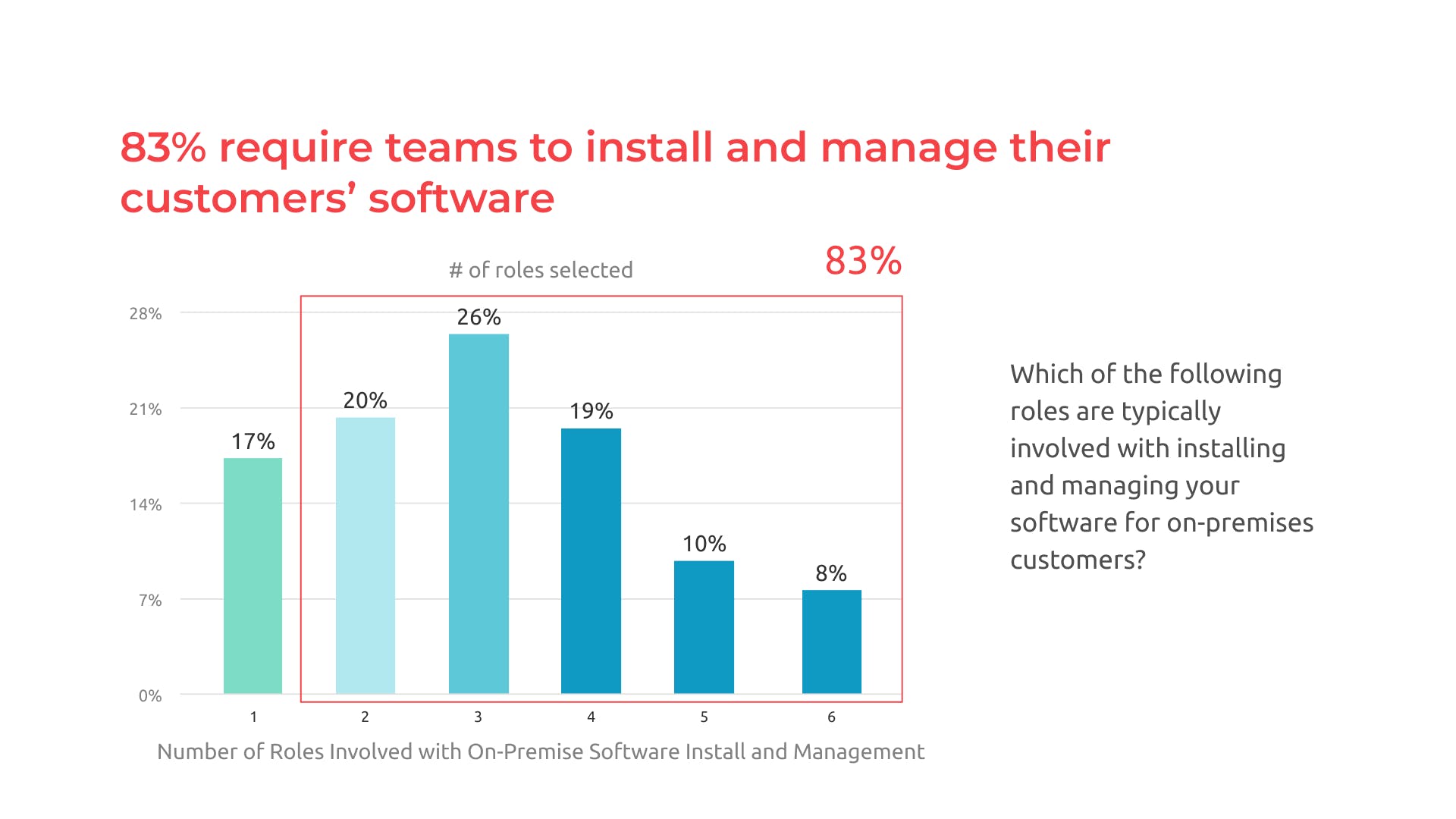With the rapid adoption of on-premises deployments among enterprises, there’s one thing that may come as a surprise: On-premises software deployments are challenging and slow, and software teams still struggle to deploy and maintain customer-managed software as demand rises.
In this series, we’ll explore the results of The State of On-Prem: Modern Solutions for a Traditional Problem, a new report from replicated and Dimensional Research.
Looking for Part 1 of this series? Click here.
Looking for Part 2 of this series? Click here.
Skip ahead. Get the entire series now in this free whitepaper.

Part 3: On-Premises Software Deployments are Challenging and Slow
While it may be popular to believe that “cloud is king” and SaaS is the best and most in-demand modern enterprise software, data shows that demand for on-premises software is equally as strong. It’s the smart choice for customers operating under security, regulatory, and compliance requirements; many organizations cannot allow their customer data to be shared in multi-tenant environments. Additionally, software companies that do not currently provide an on-premises solution to customers leave money on the table and miss a significant business and competitive opportunity.
The recent survey from Dimensional Research includes feedback from 405 business and technology professionals at executive and manager seniority levels, representing software companies of all sizes around the world. The qualified survey participants were asked a series of questions about their company’s software delivery options and use of containers to better understand the current use, need, and challenges for on-premises software delivery and investigate the adoption of container-based applications and the use of Kubernetes.
In part three of this series, we’ll look deeper into the responses focusing on the struggles that still plague software teams installing and configuring on-premises software.
While this report showed that on-premises software delivery via Kubernetes is the clear answer, the data also highlighted another challenge: many of the companies surveyed still struggle with the tedious and time-consuming complexities that accompany building modern on-premises software: 85 percent of respondents stated that their customers require support with container-based applications, and 83 percent of those surveyed said they are dedicating multiple roles to the installation and management of their customers’ software.

Confirming the process of installing and configuring on-premises software is complex, only 16 percent of respondents reported that their company can deploy on-premises software in under a week. These difficulties led some of the survey participants to respond that their company does not provide an on-prem option for this reason, and of those who said they don’t offer an on-premises option, 57 percent reported that they are losing business as a result.
While the software industry has made a concerted shift to embracing the benefits of modern on-premises solutions, they still require a deep understanding of new tooling and libraries that bottleneck and set support engineering teams back. Until these delivery options become as simple to provide as SaaS, vendors will struggle to provide customers with solutions quickly.
This report has brought to light several important indicators of the state of on-premises adoption and retention across enterprise software vendors and customers. In the final entry of this series, we’ll discuss some solutions that independent software vendors can embrace to help with the problems covered in this article, as well as look toward the future of on-premises software delivery.
Hate to wait? Download our free whitepaper now to read it all.
